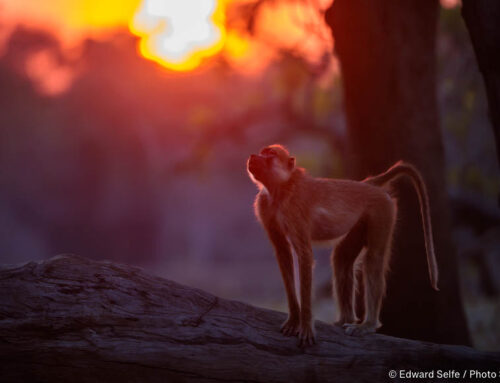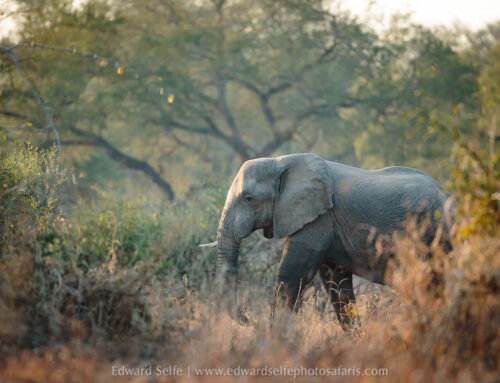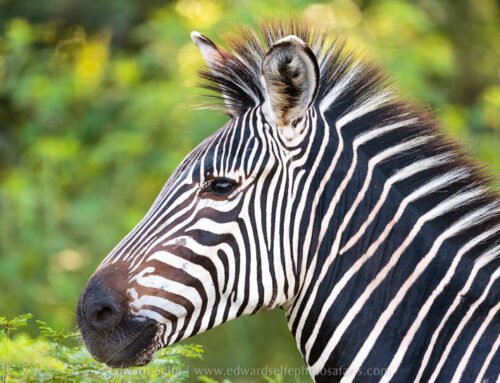On a short morning safari with my family at the weekend, we found a solitary buffalo bull. Although these guys aren’t very social (or sociable!) they are very rarely seen alone, preferring the company (and protection) of other bulls.
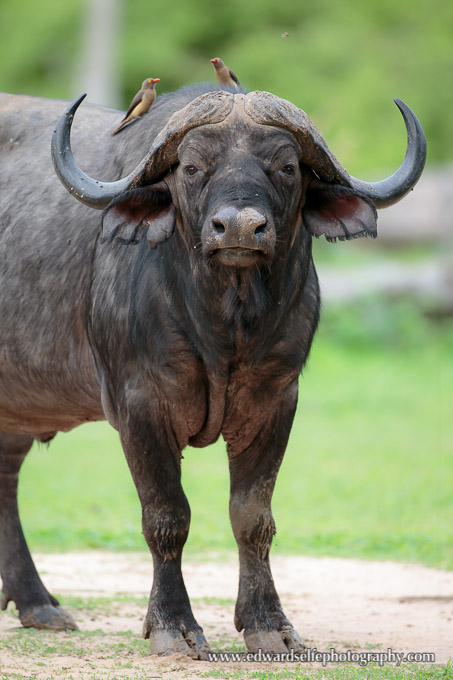
It’s a fallacy to say that they are all the old bulls who have left the herd for retirement. It only takes a bit of observation, followed up with some reading, to show that bulls cycle through the herd, taking some time as the dominant males among the females, and the rest of the time resting and feeding. Especially as most of the mating occurs during the rains, it’s not uncommon for bulls to spend most of the dry season separate from the herd. The theory can be tested by identifying distinctive bulls who are alone in the dry season, but then can be spotted back with the herd once the green grass starts to flush.
This male had a hernia on his stifle and moved very clumsily. He didn’t much want to move away so we sat and watched the oxpeckers working through the hair on his face. The cloudy conditions are good for photographing dark creatures such as buffalo, because the contrast is lower and the shadows don’t get blocked up. I kept the camera on the oxpeckers, knowing that he would toss his head and shake them off at some point.
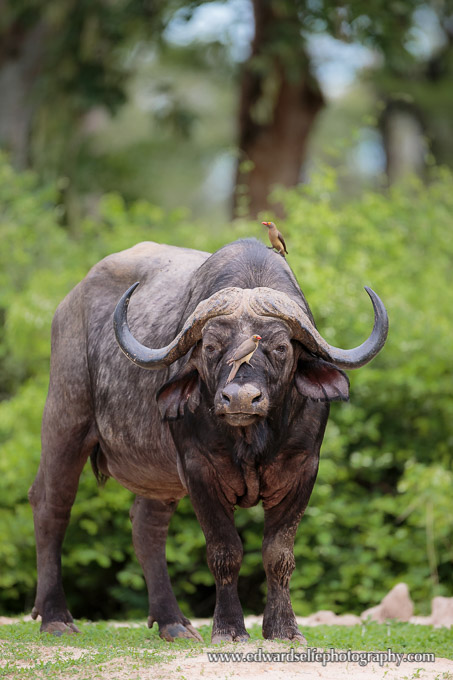
He did, but I was too slow with my shutter!
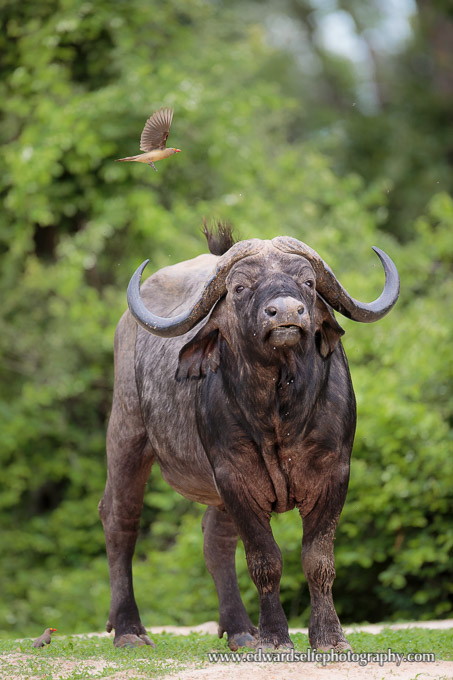
I took the approach that I rarely do, and used the high frame rate of my camera to capture a burst of shots as he tossed his head the second time! Zooming in on the screen, I had caught the moment perfectly, and the bird was just lifting off from the face.
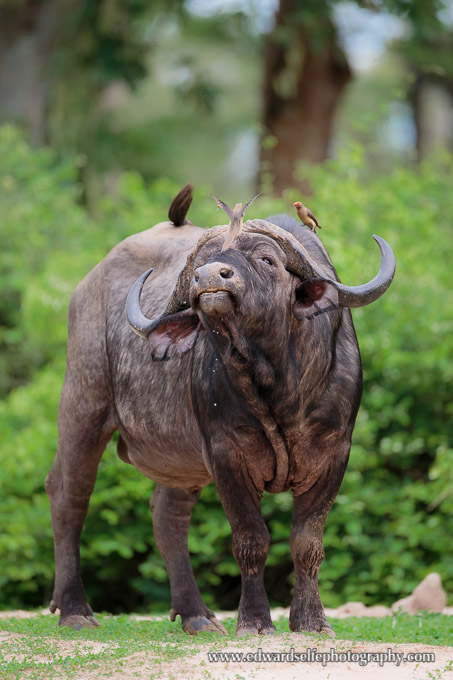
However, something wasn’t right. I could see the bird and the action that was going on, but I was missing the shape of the bird, as it was hidden against the dark coat and boss of the buffalo.
I shifted position slightly, and waited again. This time, the buffalo turned his head slightly as he shook off the bird and I waited for the oxpecker to leave his face before clicking my shutter. The bird’s shape is visible against the greenery and the expression on the bovine face tells it all.
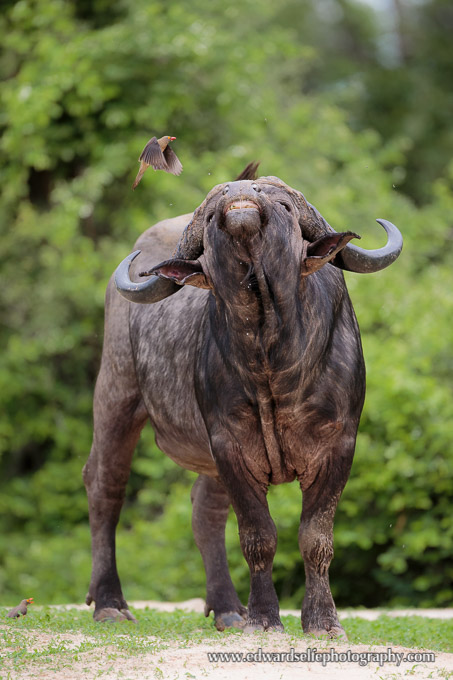
It takes time to spot these little improvements while in the bush (rather than only spotting them when reviewing photos back in camp, but it’s one of the benefits of joining a photographic safari, rather than a normal game-viewing safari. As your guide and photographic advisor, you get the benefit of my knowledge of the bush, combined with the photographic experience (mostly lots of mistakes!) that I’ve gained over years in the Luangwa.

